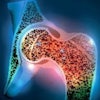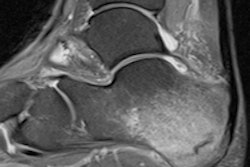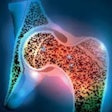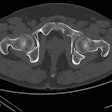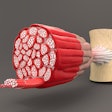
CHICAGO - The best way to determine how long it will take a professional soccer player with a thigh-muscle injury to return to the field is by evaluating certain key MRI results, according to a German study presented at the RSNA 2014 meeting.
More specifically, MRI can help determine the severity or grade of the injury and the extent of edema, which can help predict how long the player will be on the sidelines.
"Muscle injuries are very prominent with professional soccer players, with more than 30% of the elite players suffering those injuries," said Dr. Marc Regier, from University Medical Center Hamburg-Eppendorf, who presented the study results. In a single season, at least 50% of soccer teams will have at least one player go down with a muscle injury, he estimated.
"So the decision-making process to return to activity has a major impact on the athletes and team strategy, and even has a significant financial consequence," Regier said, making it all the more important to accurately diagnose the injury and estimate recovery time.
The study followed players from the Hamburg soccer team in the German Bundesliga league for three consecutive seasons. The players were imaged on a 3-tesla scanner, and there were 87 thigh-muscle injuries among the 47 athletes.
The injury list
The areas injured were 38 hamstrings (44%), 23 quadriceps (26%), and 26 adductor muscles (30%). Most of the thigh-muscle injuries were located in the myotendinous surface (43 cases), while 27 were in the muscle belly and 17 were in the myofascial surface.
The predefined MRI protocol included coronal and transverse T2-weighted short tau inversion recovery (STIR), T2-weighted turbo spin-echo (TSE), diffusion-weighted imaging (DWI), and T1-weighted TSE sequences. Identical MRI scans were performed the day after the injury and on the day the player returned to play.
Two blinded radiologists read all MRI scans independently, and muscle injuries were graded on a scale of 0 to 3, with 3 representing the most severe injury. The radiologists detected four grade 0 muscle injuries (5%), 56 grade 1 injuries (64%), 24 grade 2 injuries (28%), and three grade 3 injuries (3%).
The grade of muscle injury was then correlated with the time it took the athletes to return to action. Additionally, T2-weighted imaging and DWI were used to measure the amount of edema within the injured muscle, which was correlated with a player's downtime.
Grade-downtime relationship
Most injuries were grade 1, and there was an almost linear relationship between the injury grade and recovery time, Regier said. As one might expect, the time to full recovery was longer with the more severe or higher grade of injury.
Players with grade 0 injuries took only six days to recover. The 56 athletes with grade 1 injuries took 12 days to return to play, while players with grade 2 injuries were off the field for 20 days and those with grade 3 injuries were off for 46 days.
The researchers found a similar trend when they measured the area of edema and compared it with time spent on the disabled list.
In 29 cases, the area of edema was less than 25% relative to the injury; those players returned to the field in 10 days. For 31 athletes, edema was 26% to 50% of the injury; those individuals played again in 14 days. For 21 players with edema between 51% and 75%, return to action took 18 days. Finally, edema was 76% to 100% for six players, who took 48 days to return to the field.
"As we see, with enlarging areas and size of edema, it took [players] longer to recover," Regier said.
In addition, players with a myofascial surface injury took longer to recover (24 days, on average) than those with a myotendinous surface injury (22 days) or muscle belly injury (16 days).
"MRI-based grading and transversal area measurements of thigh-muscle injury strongly correlate with the duration of convalescence and can be used to estimate players' time of absence," Regier and colleagues concluded in their study abstract.
Therefore, MRI is a "valuable tool" for predicting how long a professional soccer player will be on the sidelines due to a thigh-muscle injury, according to the group.



